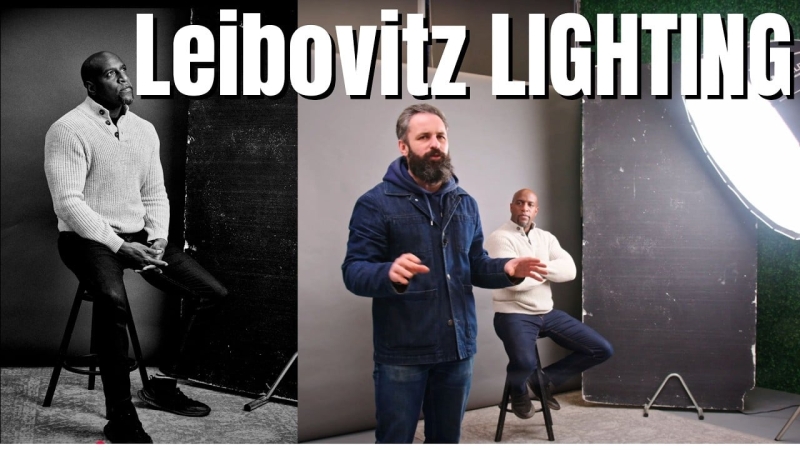Contents
If you’ve ever admired the dramatic, intimate, and timeless portraits of Annie Leibovitz, you’re not alone. Her ability to capture raw emotion and striking contrasts with minimal setups is something many photographers aspire to emulate, myself included.
In this video, Scott from Tin House Studio walks us through how to create a Leibovitz-inspired portrait using just one light and shares some practical tips to elevate your portrait photography using minimal gear.
The Setup: One Light, Big Impact
Scott’s setup for this shoot was refreshingly simple: a 120cm parabolic softbox paired with a 500W bicolor COB light. He quickly clarified that while the softbox is called “parabolic,” it doesn’t produce parabolic light—the name simply refers to its shape. Instead, this softbox excels at creating soft, diffused light, which is perfect for achieving that Leibovitz-esque aesthetic.
Why a Softbox?
Scott emphasized the importance of using a large softbox, like the 120cm one he chose. When placed close to the subject, the softbox produces beautifully soft light with smooth transitions between light and shadow. This is key for creating flattering, dramatic portraits that feel intimate and powerful.
Positioning the Light
Scott explains that Leibovitz often uses light that glances across the face, creating depth and dimension. To replicate this, he positioned the softbox slightly behind the subject, allowing the light to skim across their features. This technique emphasizes texture and adds a sculptural quality to the portrait. This is often called feathering the light.
Creative Techniques for a Leibovitz Look
1. Broad Lighting for Drama
Scott used broad lighting—where the light hits the side of the face turned toward the camera—to create a powerful, masculine look. He had his subject angle his body slightly toward the light while keeping their face turned toward the camera. This created a strong, confident pose that exuded presence.
2. Negative Fill for Depth
To enhance contrast, Scott used a black foam board as a negative fill on the shadow side of the subject. This deepened the shadows and added a moody, cinematic feel to the image. He stressed the importance of negative fill as a simple yet effective tool for controlling light and adding depth.
3. Playing with Light Quality
While the softbox provided diffused light, Scott experimented with making it more specular (focused and directional) by removing some of the diffusion layers. This created a harder falloff of light on the background, adding a dramatic edge to the portrait. He reminded photographers that small adjustments can make a big difference in the final image.
Posing and Composition Tips
1. Direct Your Subject
Scott emphasized the importance of posing in capturing the right mood. He directed his subject to sit upright, fold their arms, and tilt their chin slightly toward the light. This created a strong, confident posture. Scott encouraged photographers to give specific instructions, as small tweaks can transform a pose.
2. Use the Environment
Scott incorporated a textured rug and a painted black wall into the frame to add depth and interest. These elements helped create a rough, raw aesthetic that aligns with Leibovitz’s style. He advised photographers to look for textures and props that complement their subject and enhance the story.
3. Experiment with Angles
Scott moved around his subject to explore different lighting and compositional possibilities. By shifting his position, he created varying shadow patterns and highlighted specific features. He noted that sometimes the best shot comes from an unexpected angle, so photographers should always be willing to experiment.
Post-Processing
Scott explains his post-processing in detail in the video and why he converted it to black and white. Annie typically shoots in both colour and black and white, so it’s not imperative to her style.
Scott’s approach to shooting an Annie Leibovitz-style portrait demonstrates that you don’t need a complicated setup or a ton of gear to create powerful, emotive portraits. With one light, a few modifiers, and a clear vision, photographers can achieve striking results. The key lies in focusing on light quality, contrast, and posing—elements that Leibovitz masters in her work.
Check out the whole video below:

